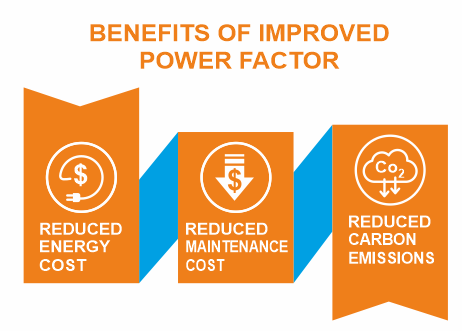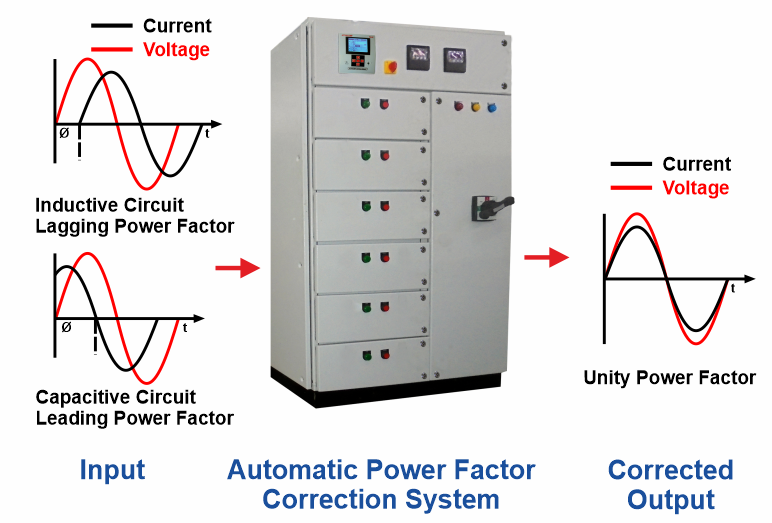Importance of Power Factor
In the realm of electrical engineering, one term that holds significant importance but often mystifies many is “Power Factor”. It’s a crucial factor that plays a pivotal role in determining the efficiency of electrical systems. The concept of Power Factor takes centre stage, orchestrating the efficiency of energy consumption. Let’s embark on a journey to unravel the mysteries surrounding power factor and comprehend its impact on the performance of our electrical networks. We will explain the essentials of Power Factor, from its ideal value to the challenges posed by poor power factor and the transformative solutions for optimal efficiency.
The Ideal Value of Power Factor
The Ideal Value of Power Factor: In Simple Terms Power Factor is a measure of how effectively electrical power is converted into useful work output. Expressed as a value between 0 and 1, an ideal Power Factor of 1 (unity) signifies perfect efficiency, where all power is transformed into useful work. In reality, achieving this perfect unity is a complex balancing act.
Issues Caused Due to Poor Power Factor: Poor Power Factor, often characterized by values approaching ‘0’, results in a cacophony of challenges. Increased energy consumption, higher electricity bills, and diminished equipment efficiency are some of the dissonant issues that can arise. This inefficiency not only strains electrical systems but also has a ripple effect on the environment and operational costs.
Benefits of Maintaining Correct Power Factor

Maintaining the correct Power Factor is akin to tuning an instrument to produce a harmonious melody. Key benefits of improving power factor are as follows:
Energy Efficiency: Optimizing Power Factor enhances energy efficiency, reducing wasteful energy consumption.
Cost Savings: Improved Power Factor translates to lower electricity bills, contributing to substantial cost savings.
Enhanced Equipment Lifespan: Electrical equipment operates more efficiently, leading to reduced wear and tear and extended lifespan.
Environmental Impact: Lower energy consumption contributes to a reduced carbon footprint, aligning with sustainable practices.
Power Factor Correction Solutions
Improving Power Factor requires the deployment of power factor correction solution. NAAC Energy Controls is at the forefront of offering cutting-edge power factor correction solutions.
Capacitor Banks: Intelligently deployed capacitor banks improve Power Factor by offsetting reactive power, optimizing efficiency.
Automatic Power Factor Correction Panels: Dynamic panels continuously monitor and adjust Power Factor, ensuring optimal efficiency in real-time.
Harmonic Filters: Addressing harmonics, these filters contribute to a cleaner power factor, reducing disruptions and inefficiencies.

Conclusion
As our exploration of Power Factor concludes, envision an electrical symphony where efficiency and harmony prevail. NAAC Energy Controls stands as the enabler, providing solutions that transform discordant electrical systems into a harmonious, energy-efficient ensemble.
It’s a metric that empowers industries and businesses to make informed decisions, ultimately paving the way for a more sustainable and resource-efficient future. So, let’s demystify the power factor, embrace its significance, and work towards a world where electricity is not just consumed but utilized intelligently and efficiently.



